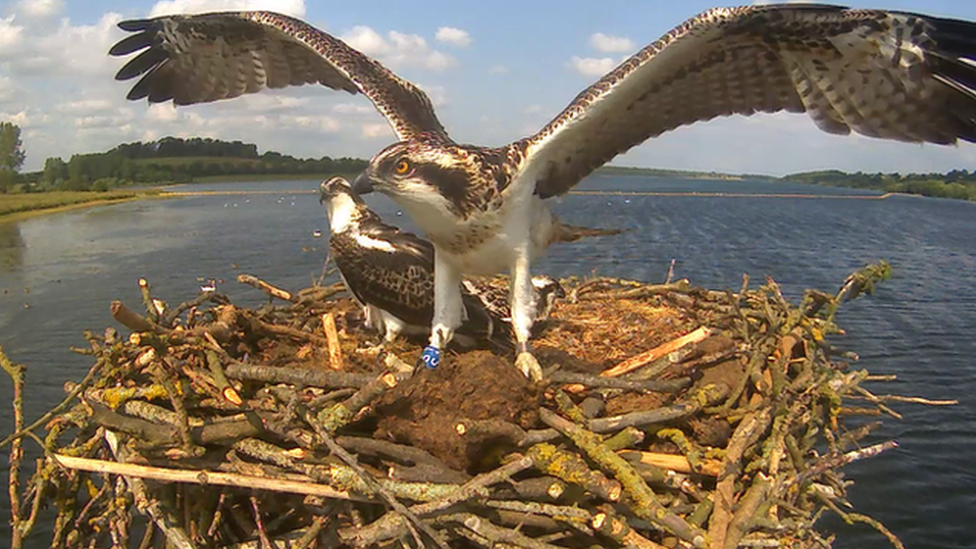Bird-watchers catch 'thrilling' trout-hungry ospreys on camera
- Published
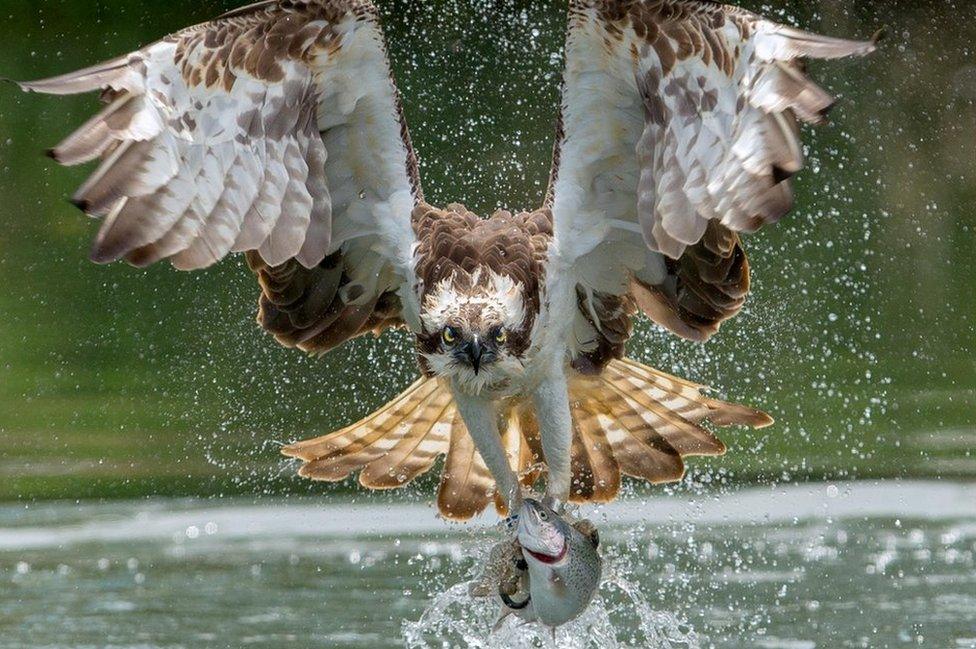
Horn Mill was losing trout valued at about £20,000 each year to hungry ospreys before the photographer hide was set up
Wildlife photographers have been coming in their hundreds to take pictures of hungry ospreys hunting at a trout farm.
Horn Mill Trout Farm, in Exton, Rutland, welcomes up to 12 visitors a day to its osprey hide - set up after the birds of prey stole thousands of pounds' worth of fish from the trout hatchery.
The purpose-built hide, sunk into the ground beside the pond, has attracted snap-happy visitors from across Europe who want the "thrilling" experience of being so close to ospreys.
The fee the bird-watchers pay is used to offset the trout losses - believed to be costing the farm £20,000 a year - while allowing the ospreys to continue feeding.
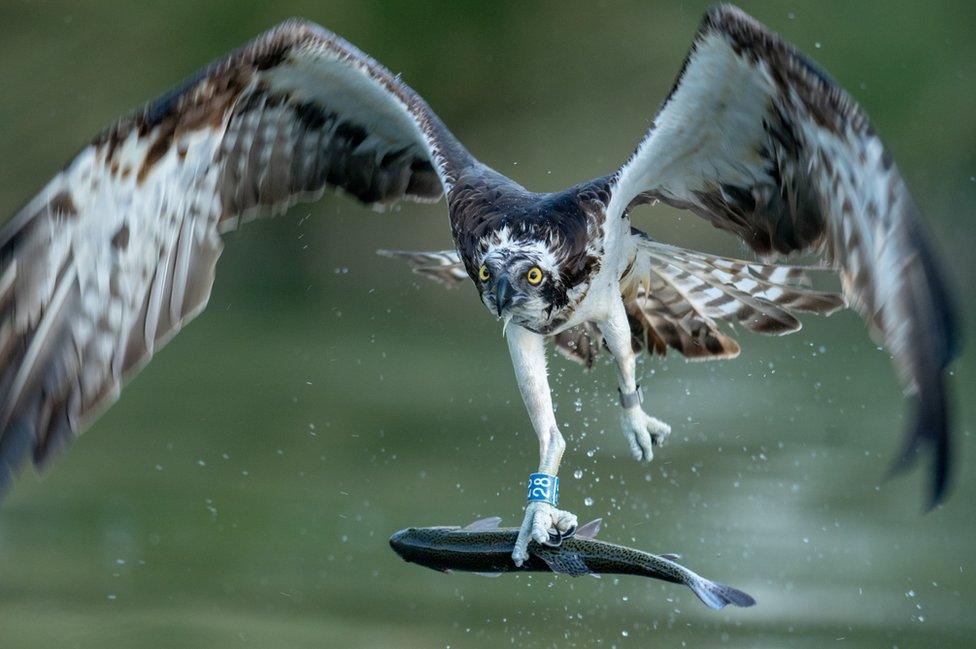
Scottish chicks were introduced to Rutland Water Nature Reserve in 1996 and in 2001, a first pair bred
A decision was initially made to put netting over the ponds to stop the ospreys from stealing the fish.
After netting five of the six ponds, the farm was approached by the Rutland Osprey Project, which suggested leaving the largest pond uncovered.
In return, the people behind the osprey project built a four-person hide for photographers.
Geoff Harries, 72, from Cambridge, was one of the first photographers to use the hide when it opened in 2013.
He said: "My first experience of photographing ospreys was from the hide at Rutland Water, but the birds were always too far away to get the images I wanted.
"It was a thrilling experience to have ospreys flying towards the hide less than 10 metres away."
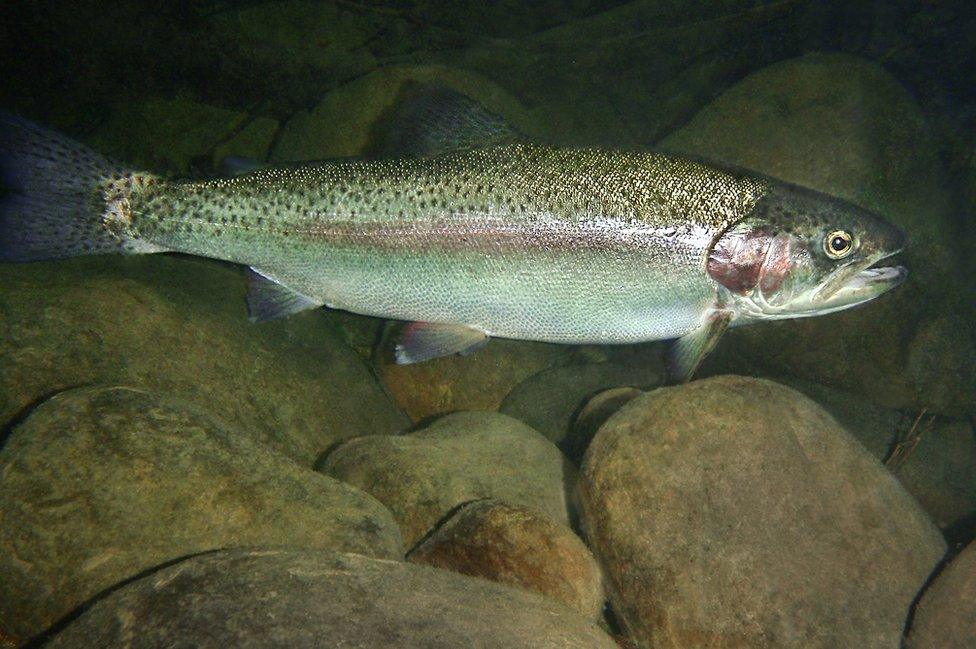
The arrangement at the trout farm has been dubbed a "conservation win-win" by a wildlife expert
To begin with, Mr Harries said there was only one main osprey - nicknamed "Mr Rutland" - but during his visits to the county, the bird raised 32 chicks with three different females.
Several of his offspring are now breeding in the area, according to the Rutland Osprey Project.
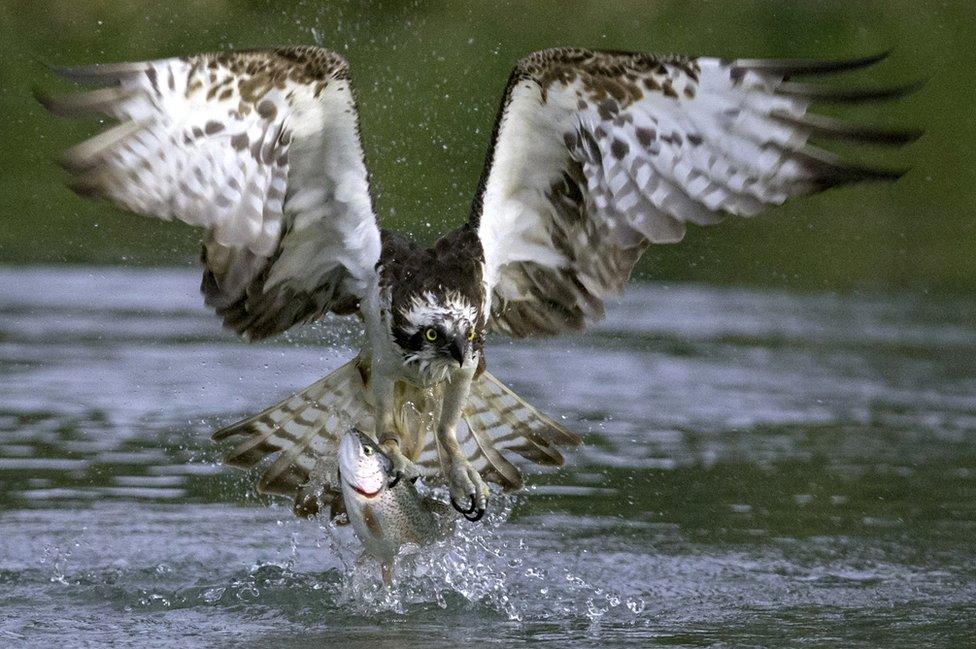
"Mr Rutland" relocated to Rutland Water in 1997 and bred every year between 2001 and 2014
Carey Wilcox travelled to Horn Mill from Sussex and said: "It was a very early start to the day but was well worth it.
"The birds were extremely close and there was plenty of other wildlife to keep us entertained in between dives."
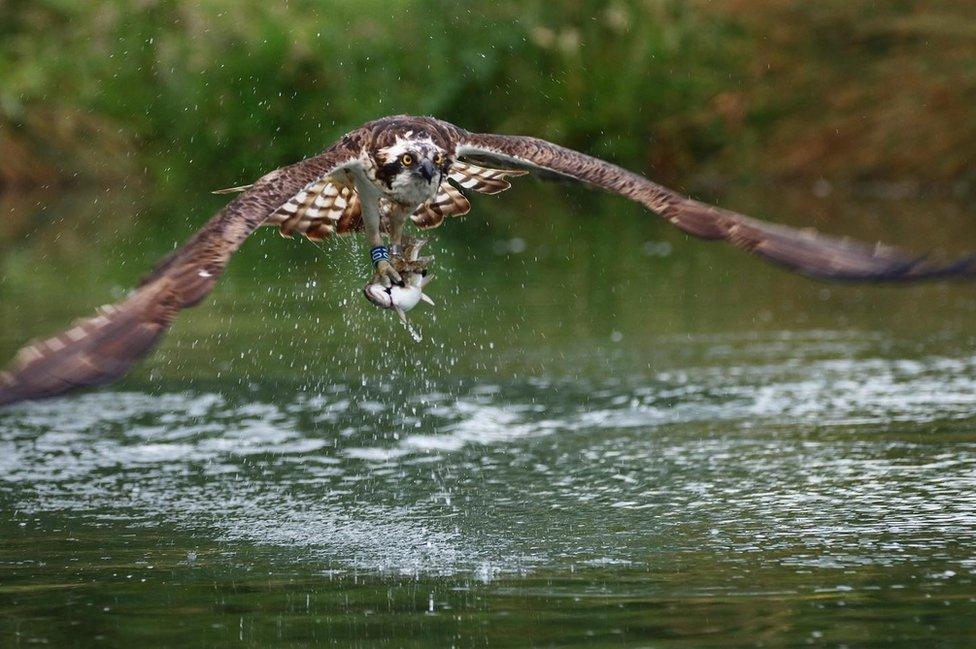
The RSPB lists the bird of prey as a conservation concern because of its historical decline due to illegal killing and low breeding numbers
Photographer Peter Humphrey, 70, from Hampshire, said the hide was "the only reliable place in England to photograph ospreys fishing close-up".
"It is an amazing thing to see, let alone photograph," he added.
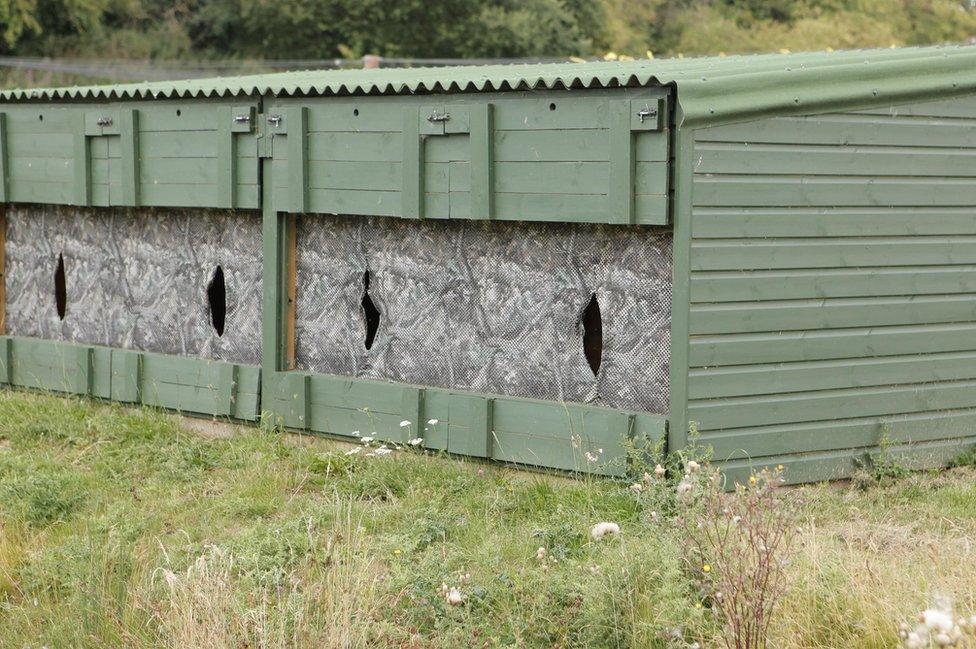
The hide is "the only reliable place in England to photograph ospreys fishing close-up", according to one snapper
Jamie Weston, from Horn Mill, said visitors had seen ospreys at the pond almost every day so far this season - which runs from March to August.
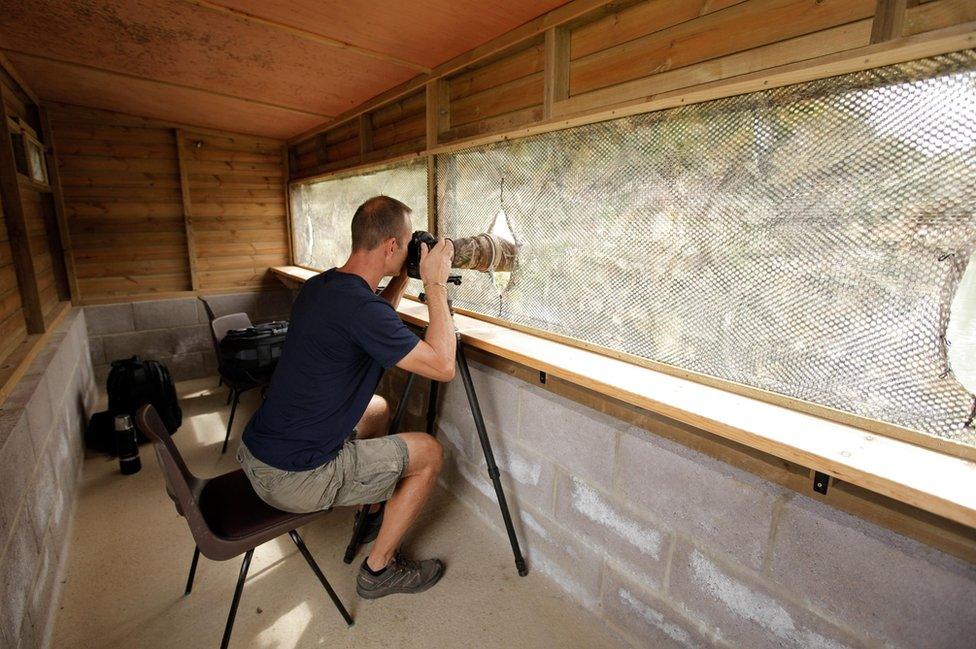
Farm owner Lawrence Ball has rebuilt the hide to fit more people
Simon Bentley, director of Leicestershire and Rutland Wildlife Trust - which runs the Rutland Osprey Project - described the hide as a "conservation win-win".
He said the 40 or so ospreys in Rutland generally fed at Rutland Water but nearby trout farms also offered "rich pickings".
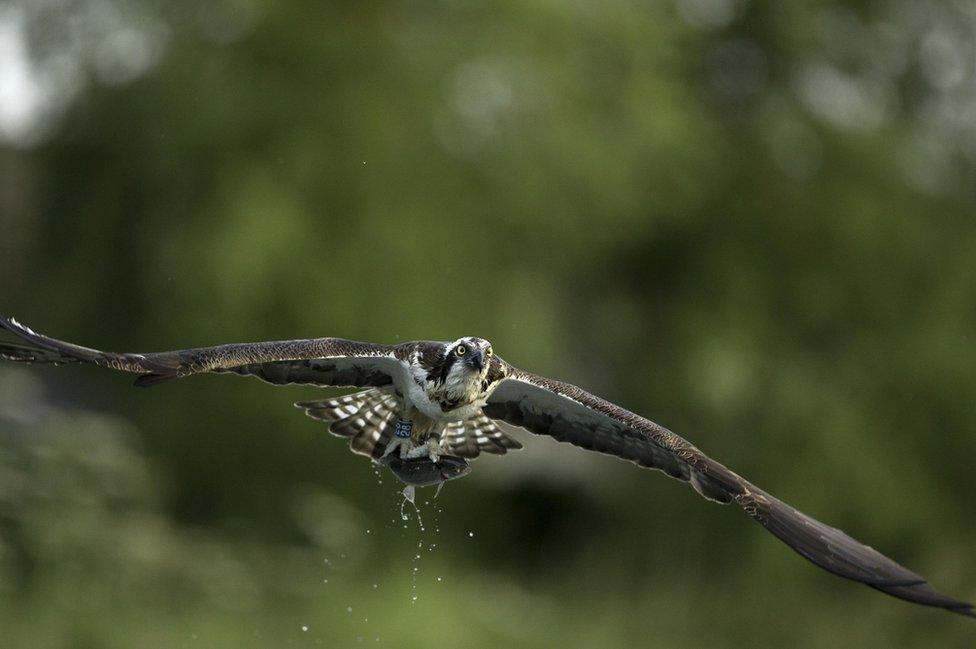
The osprey hide was made bigger due to high demand from photographers
Mr Bentley said: "Hiring this out to wildlife photographers ensures everyone benefits.
"The trout farm earns valuable income to offset fish losses; bird photographers get fantastic pictures of fishing ospreys and the ospreys can get an easy meal."
As for the trout, he said they were all "destined to end up on a dinner plate" anyway - and this way "they enter the natural local food chain".

Follow BBC East Midlands on Facebook, external, Twitter, external, or Instagram, external. Send your story ideas to eastmidsnews@bbc.co.uk.
- Published22 July 2019
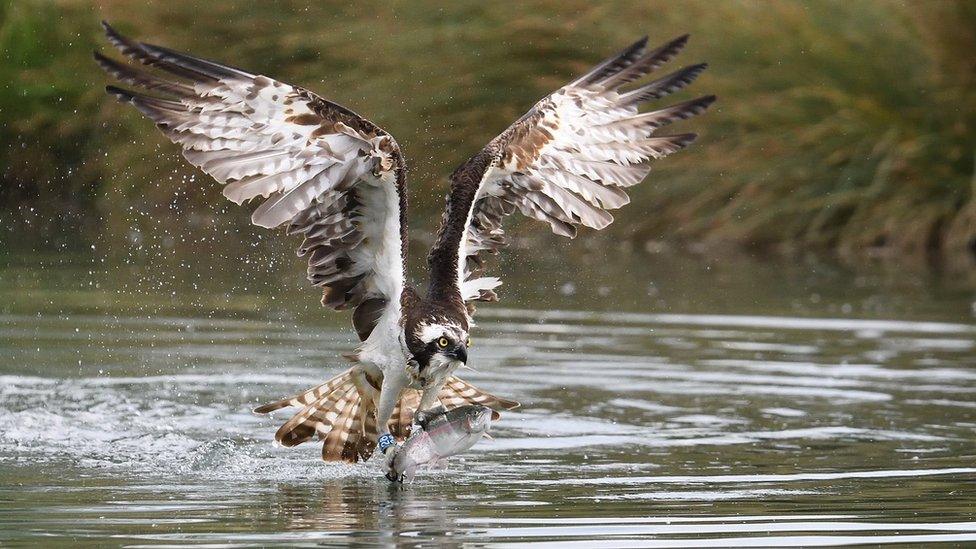
- Published6 July 2016
